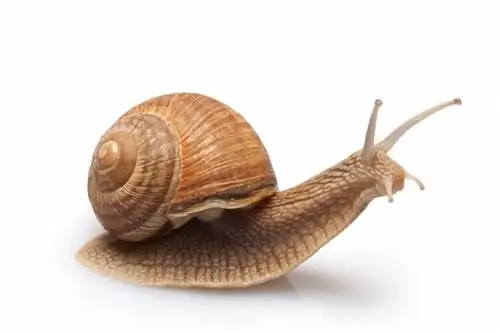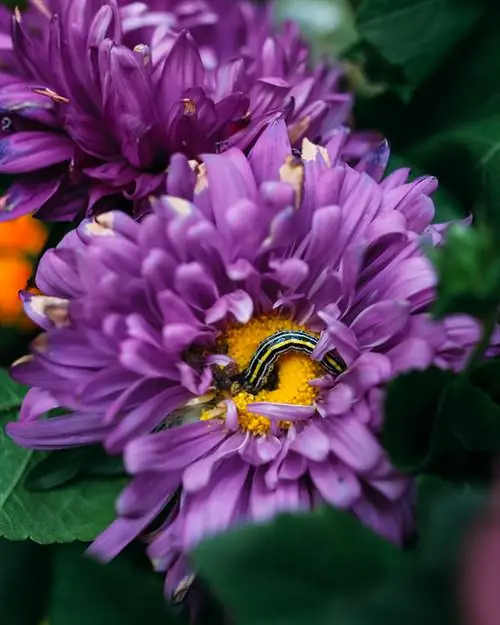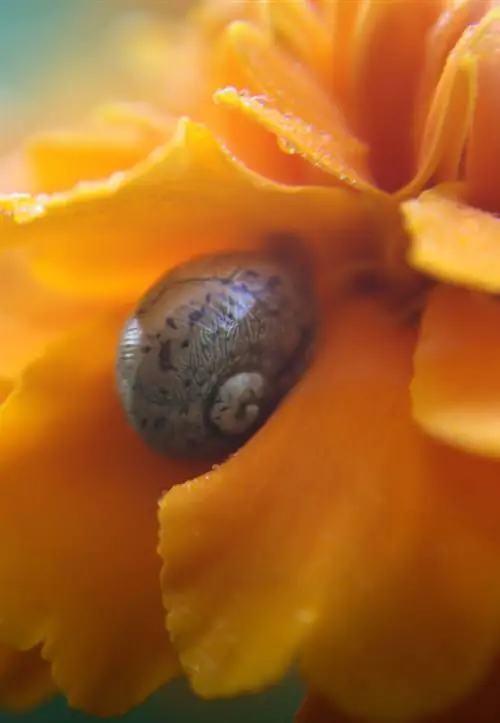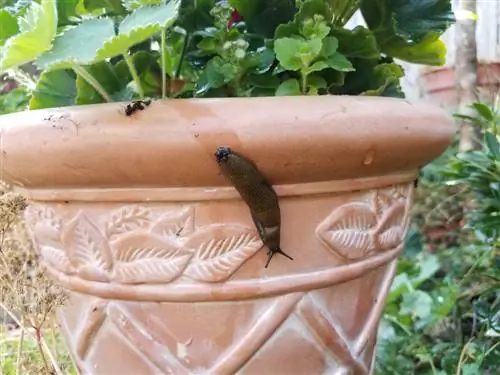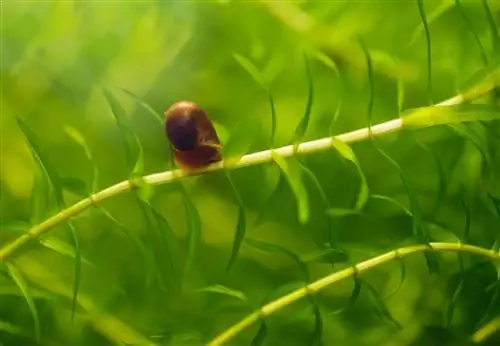- Author admin [email protected].
- Public 2023-12-16 16:46.
- Last modified 2025-01-23 11:22.
Snails are a nuisance for many hobby gardeners because they attack the laboriously cultivated vegetable garden and leave bare stalks behind. Some measures are important to prevent it from spreading in the first place.
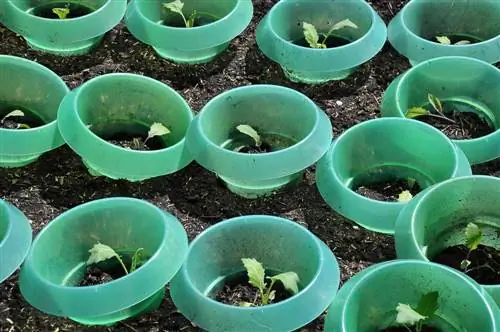
How can you effectively keep snails away from the garden?
To keep slugs away, dig up beds, water properly, collect slugs and spray stale coffee on plants. Avoid damp conditions and create ideal hiding places for the molluscs in your garden.
Digging up beds
Many snails overwinter in the egg stage. A clutch can consist of more than 100 eggs. These are located where there is a warm, humid microclimate. Dig up your beds in late fall after the first frosts so that the eggs are exposed. Repeat the procedure in spring after the soil has warmed up. This makes the snail eggs easy prey for birds and amphibians.
Proper watering
Plants that are particularly at risk from snail damage should not be watered in the evening. Extensive watering of entire beds is also suboptimal, as more snails settle in the garden in humid conditions. Here you will find an optimally accessible living space. Water the plants individually and thoroughly in the early morning every two to three days.
Collect
The Spanish slug is not affected by drought and has hardly any predators because of its heavy mucus secretion. To get rid of these unwanted visitors, consider using damp retreats to attract them. Check the hiding places in the evening and morning and collect the snails. Also look for the voracious molluscs under large leaves of rhubarb and pumpkins.
These are ideal hiding places:
- old wooden slats
- upside-down flowerpots
- Orange peel halves
- broken roof tiles
Does coffee help?
Researchers at the US Department of Agriculture conducted a study in 2002 examining the effects of coffee on snails. They came to the conclusion that coffee solutions with a minimum caffeine content of 0.1 percent have a deterrent effect on the molluscs. This corresponds roughly to the caffeine content of an espresso. This solution was sprayed directly onto the plants. However, many animals were unimpressed. Only 20 times the dose successfully keeps you away from salad and vegetables.
Tip
If you don't have an alternative use for stale coffee, spray your crops with it. It does not harm them and has a short-term effect against unwanted visitors.


